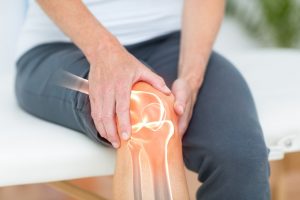 Osteoarthritis is a progressive joint disease, affecting over 27 million Americans. It’s the leading cause of pain and mobility disability. The severity and progression of the condition are affected by age, sex, genetics, joint trauma, and obesity. As the condition progresses, more severe treatments are required to alleviate the pain caused by the condition and improve quality of life.
Osteoarthritis is a progressive joint disease, affecting over 27 million Americans. It’s the leading cause of pain and mobility disability. The severity and progression of the condition are affected by age, sex, genetics, joint trauma, and obesity. As the condition progresses, more severe treatments are required to alleviate the pain caused by the condition and improve quality of life.
The most common and effective treatment in the later stages of the disease is a total joint arthroplasty (TJA), a surgery that replaces the joint components. TJA surgery has increased in demand over the past ten years, worldwide. In the U.S., it’s anticipated that four million patients will require this surgery by 2030. The increase in demand causes undue strain on healthcare systems all over the world, making the surgery less accessible to those who need it.
Advertisement
Previous research has found that osteoarthritis patients who are obese are at increased surgical risk for TJA, as well as prolonged recovery times. Patients with sarcopenic obesity are at an even higher risk. Sarcopenic obesity is characterized by increased adiposity and low skeletal muscle mass. After surgery, patients with sarcopenic obesity experience higher rates of infection, poorer function, and longer recovery times. These results have yet to be established in regards specifically to TJA surgery for treatment of osteoarthritis.
A new study examined 11 published articles for evidence on how sarcopenia and obesity are affected by osteoarthritis. They excluded articles not available in English, that focused on animals or children, did not feature osteoarthritis in sarcopenic obese patients, and did not focus on osteoarthritis of the hip and knee. Eight of the eleven studies were published in the last three years, indicating a growing interest in the effects of sarcopenic obesity on osteoarthritis.
35 Percent of Osteoarthritis Patients Have Sarcopenic Obesity
The results showed that 35 percent of osteoarthritis patients also suffer from sarcopenic obesity, although this number did vary across studies due to the use of different diagnostic criteria. The evidence found in the studies supported the theoretical outcome of sarcopenic obesity in patients who undergo TJA surgery, including delayed mobility recovery, longer recovery times, and increased rates of infection. These results were not found in relation to other musculoskeletal conditions, including lumbar spondylosis, fractures, sprains, or back pain.
One study found that the patients with sarcopenic obesity were subjected to longer hospital stays and longer recovery times than those with obesity alone. The researchers believe that this distinction is due in part to the relationship between muscle depletion and its effect on physiologic protein. Physiologic protein has been previously found to impact wound healing, risk of infections, and recuperation after surgery.
The researchers feel it is pertinent that patients with osteoarthritis are monitored for sarcopenia, obesity, and sarcopenic obesity even in the early stages of the disease. Based on their findings, they also believe that medical practitioners should hesitate before recommending weight loss surgery to those who are suffering from sarcopenic obesity and are set to undergo TJA surgery, as weight loss can be associated with a decrease in skeletal muscle mass that could be dangerous during the procedure.
Also read:
- Osteoarthritis of the hip (hip arthritis) causes pain and may be invisible on x-ray
- Osteoarthritis knee pain relief at home: Easy tips and natural remedies
- Natural Remedies for Osteoarthritis Pain Relief
